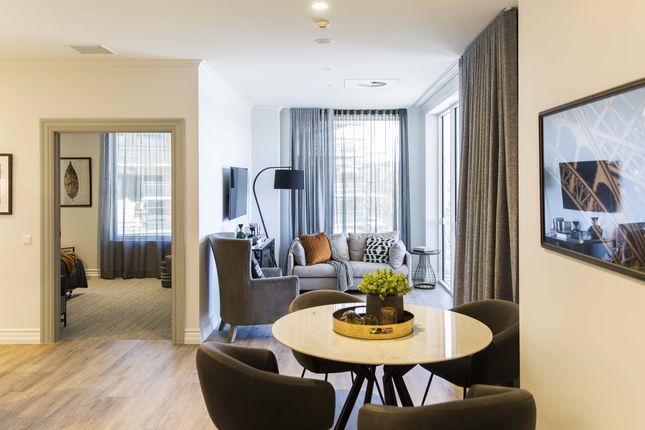A retirement village with a radically different approach to care services and pricing - which is also said to be the most expensive ever built in Australia - has welcomed its first residents.
Retirement living operator LDK has transformed a former Department of Social Security office building in Canberra into a retirement complex with more than 380 apartments. Find out more about the village here.
According to LDK, the $270 million planning and construction bill for the Greenway Views complex is the highest spent on any single village, making it the "largest in Australia".
The village includes an auditorium/cinema, learning centre, wellness centre/gym, cafes and restaurants, whisky bar, green grocer, chapel, beauty salon and barber, function rooms and allied health rooms.
It’s envisaged the village will take around two years to fill.

LDK pricing and care model
With its different approach to pricing and care, LDK is seen as something of a disrupter in the retirement living industry.
In an interview with Downsizing.com.au, LDK CEO Byron Cannon said his company did not implement the traditional retirement village deferred management fee (DMF) model.
Under the DMF model, also known as an exit fee model, retirement village consumers pay a contribution when they enter a village and then lose a portion of this contribution - sometimes along with capital gains - when they leave. Find out more about DMFs here.
As explained by Mr Cannon, LDK has a different approach. It charges incoming residents a set amount to live in the property and this amount is fully refundable when people leave. For Greenway Views, the incoming property price starts at $595,000.
It then charges incoming residents a separate amount to fund ongoing services, known as a membership fee, which is a fixed amount for life. For Greenway Views, paying the membership fee upfront costs $185,000, while paying it monthly costs $215,000, while deferring the cost until you leave costs $235,000.
This membership fee pays for village capital works and apartment maintenance. It also means that care and meals are provided at cost and that the weekly village services fees do not increase above a capped amount after your move in.
Care services can either be provided to residents in their apartments, or residents do have the option to move into what is called a ‘care hub’, at no cost.
The care hub is not a statutory residential aged care facility but a hub with a concentrated number of one-bedroom apartments where care services are provided, including dementia, respite and palliative care.
“One thing we’ve found from our interactions with consumers is that they want transparency and certainty, and we feel that our model gives this to them,” Mr Cannon said.
“There is a lot of uncertainty around the exit fee discussion, including the amount that consumers get when they leave and what their refurbishment costs might be.
“What we also find is that traditional operators are very heavily property-focussed and the consumers we speak to, are a little confused about what their value proposition is (in relation to care). We took the step to say we are a very clear care service provider.
“When consumers move in with us they get all the care they need, and they don’t need to move again.”
Mr Cannon also added that he felt there was a huge under-supply of retirement and care services available in Canberra, which Greenway Views was helping to remedy.
Care services in retirement villages
The provision of care services is a big contemporary issue in retirement villages.
This is particularly because the average age of village residents has increased in recent years (the average age of a retirement village resident in 2019 was 81 years).
This ageing resident demographic means that more residents are looking for retirement villages (overseen by State and Territory Government laws) to deliver care services.
In the past, these residents may have only expected care services once they moved into a dedicated aged care facility (overseen by Australian Government law).
The Australian retirement village industry has recently tried to create a consistent approach to this issue by releasing minimum standards for care services.


